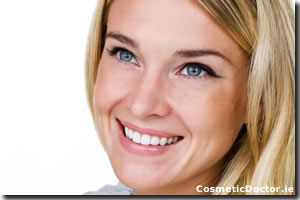Why chose a Neostrata glycolic peel?
Glycolic peels:
- Are safe and require little recovery time
- Improve acne prone skin
- Help reverse sun damage
Neostrata Peels:
- Are fragrance free
- Are a higher strength
- Are designed to only be used by medical professionals
- Enhance skin renewal
- Promote smoother, healthier skin
How will glycolic peels help me?
Glycolic peels:
- Will soften fine lines and wrinkles
- Increase smoothness in skin texture
- Will give a mild to moderate result in smoothing acne scars
- Will minimise pore size
- Will mildly lighten pigment irregularities
What is a glycolic peel?
Glycolic acid peels are light peels containing AHA or Alpha Hydroxy acids. AHA’s work by penetrating though the skins surface and dissolving the fatty bonds that hold dead skin cells together, we then neutralise the peel and your skin will be refreshed. There is minimal recovery time and they can even be done during your lunch hour!
What is the difference between a Neostrata peel and a peel at a beauty salon?
The difference between having a glycolic peel performed in a medical aesthetics clinic comes down to what we are trained to use. We are allowed to use ‘unbuffered’ glycolic acid as opposed to ‘buffered’ acids that you would get in a beauty clinic.
What does this mean exactly?
Well buffered essentially means the addition of water or another agent to ‘dilute’ the glycolic acid. So if you are getting a 70% salon peel, you are essentially getting a much wear peel as they would be part neutralised to make them safer for non-medical use. Unbuffered peels are true peels so they need professionals with special training in glycolic acids and its effect on the skin.
Is there anything I should do before my glycolic peel?
We recommend that you make your appointment two weeks after any other facial treatment that you may undergo e.g.: waxing, laser hair removal, IPL, Retin A creams, microdermabrasion. It is also a good idea to start using a glycolic based product on the skin prior to the peel. We recommend these as glycolic aids are AHA or Alpha Hydroxy Acids- AHA is a substance that our skin can build a resistance to, using the product before your peel will give you a better chance of tolerating the glycolic peel and you will also get a better result. We also recommend you continue to use Glycolic acid products throughout your course of treatments. We also recommend that you arrive to your appointment with a fully cleansed face.
How will I look after the peel?
Initially after your peel your skin may be red, you may experience some of the following:
- Stinging
- Itching
- Slight discomfort
- Dryness
- Tightness
- Sun sensitivity
- Peeling of the outer superficial layer, though very minimal
What are the possible side effects?
Although most patients have no side effects, the following are a risk:
- An acne flare up can be possible due to deep pore cleansing
- Herpes (cold sore) break out can occur- though this can be avoided if you advise us that you are prone to cold sores.
- Acne like inflammation around the mouth (perioral Dermatitis)
What should I do after my peel?
You should:
- Avoid hot showers and saunas
- Avoid using any products with active ingredients like retinol, hydroquinone, salicylic acid etc.
- You should not have any further facial treatments for two weeks
- You should apply bionic cream twice daily for seven days until the skin appearance returns to normal
- Wash treated areas very gently
- If your skin is sensitive avoid make up
- Avoid sun exposure
- Do Not- peel, pick, scratch or scrape the skin
- DO not use a face mask
It can take up to two weeks to see the benefits of a facial peel, during this time some minimal peeling may occur. We also strongly advise all clients to use a strong sun screen as glycolic acid can make your skin photo sensitive, which means that you have a strong chance of sun burn.
Should you wish to attend for a glycolic peel then give us a call on 01 685 3100 for an appointment!


